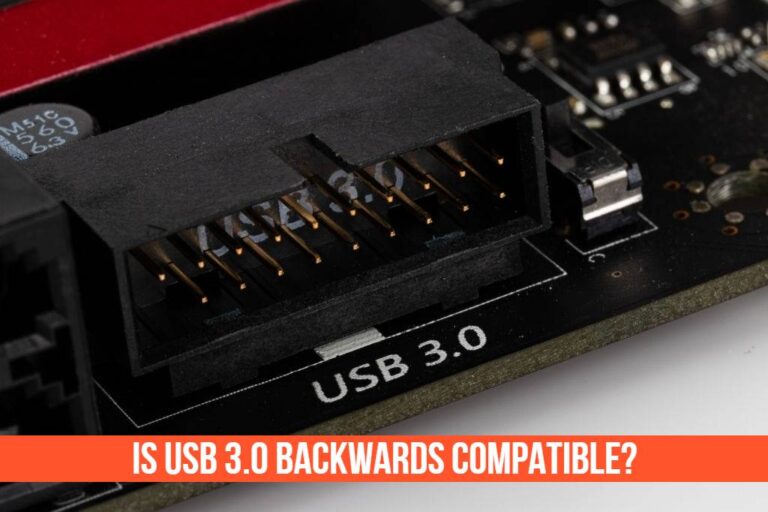
Is USB 3.0 Backwards Compatible?

Do you know about USB 3.0’s backward compatibility? If not, learn about the differences and benefits of USB versions, as well as the backwards compatibility of a USB 3.0 device.
If you’ve heard of USB 3.0 but don’t really know what it is, or how it’s different from USB 2.0, you’re not alone! Here’s everything you need to know about USB 3.0 and whether your current devices are compatible with the new standard: what is the difference between USB 3.0 and 2.0, and how do they compare?
If you are still using USB 2.0 and not USB 3.0, you are missing out on the benefits of faster speeds, better power efficiency, and more compact designs. The good news is that while USB 3.0 may be backwards compatible with older hardware, it also supports all devices that use USB 2.0 or higher. This article talks about how backward compatibility works and the factors related to it.
What is Backward Compatibility?
Backward compatibility is the ability of a device to work with other devices and software, even if they were not made to work with each other. The term was first used in the computer industry, where it referred to a system that could run older software. It is also known as non-incompatible or interoperability.
USB 3.0, or USB 3.1 Gen 1, is the most recent revision of the USB standard. It is backward compatible with USB 2.0, meaning it can use all the cables and connectors that were made for USB 2.0 devices.
USB 3.0 is a physical standard for connecting peripherals to computers and other devices. USB 3.0 was designed for faster data transfer rates, increased power, and backward compatibility with USB 2.0.
Is USB 3.0 Backwards Compatible With 2.0?
The answer is yes, USB 3.0 is backwards compatible with 2.0. However, the maximum transfer speed of USB 3.0 is up to 5 Gbps, which is twice as fast as USB 2.0.
So, if you have a USB 2.0 port, you can use it to connect USB 3.0 devices as It is the next generation of USB. It is a different version of USB which supports faster data transfer rates and much higher power requirements. Moreover , It has been designed to be backwards compatible with USB 2.0.
Is USB 3.0 Backwards Compatible With 1.0?
Yes, USB 3.0 is backwards compatible with USB 1.0. However, it will not provide the same level of performance as that of USB 3.0.
How To Identify Your USB Connector
USB 3.0 is the latest version of USB, which is backward compatible with USB 2.0 and USB 1.1. It uses the new standard of Type-C connector, that is designed to be reversible and be inserted in both ways.
So, you can identify your USB connector by looking at the end of the cable that plugs into your computer. The most common USB connectors are A type (also known as Type A), B type (also known as Type B), Mini-B and Micro-B.
What Are The Different Versions Of USB?
There are three types of versions which are listed below:
1 . USB 1.0
USB is a technology used to connect devices to computers. The original USB was developed by Intel in the year 2000 and it is still used today.
It was the first standard for universal connection of peripheral devices. USB 1.0 came in two flavors: A five-pin version and a six-pin version. It supported up to 127 devices and 480 Mbps data transfer rate.
2. USB 2.0
The first version of USB was called USB 1.0. It allowed up to 127 devices to be connected at a time, and only one device could be powered at a time. This version was used on all USB-enabled devices.
The USB 2.0 allows up to 127 devices to be connected at a time, and is capable of providing power to multiple devices simultaneously. USB 2.0 is the most popular version of USB. It has been on the market for almost 15 years and has been used by millions of users across the world.
The USB 2.0 is designed to transfer data at up to 480Mb/s. It can be used for data storage and digital audio, as well as printing and scanning. USB 2.0 is a fast, convenient way to connect computers, printers, digital cameras, external hard drives, and other devices.
3. USB 3.0
The USB 3.0 standard is the latest version of the USB standard. Since version 1, USB 3.0 has been developed to bring much faster data transfer rates as well as backward compatibility with the previous versions (1 & 2).
It can transfer data at a rate of 5 Gbps (bits per second) as compared to the previous USB 2.0 standard, which can transfer data at a rate of 480 Mbps (megabits per second). The USB 3.0 specification also supports power-sharing and power-saving modes in addition to the dynamic power scheme.
Conclusion
If you’ve been using USB 3.0 for a while, it’s possible that you’ve run into some compatibility issues. This can be because of the type of computer or device you’re using, but there are ways to get around this problem.
You may be surprised to learn that USB 3.0 is backwards compatible with older USB 2.0 devices. It’s important to keep this in mind when shopping for new gadgets, especially if you’re planning on upgrading your old USB 2.0 drives and peripherals to USB 3.0 speeds.
This means that you can use the same cables to connect to a USB 2.0 or 1.1 device, but you will need to use an adapter if you want to connect your devices to a USB 3.0 port.
In this article we have discussed what is backward compatibility and is USB 3.0 is really backwards compatible with other devices and how to identify your USB connector. We found USB 3.0 Backwards Compatible with all its previous versions and we hope that this article helped you get your answer.